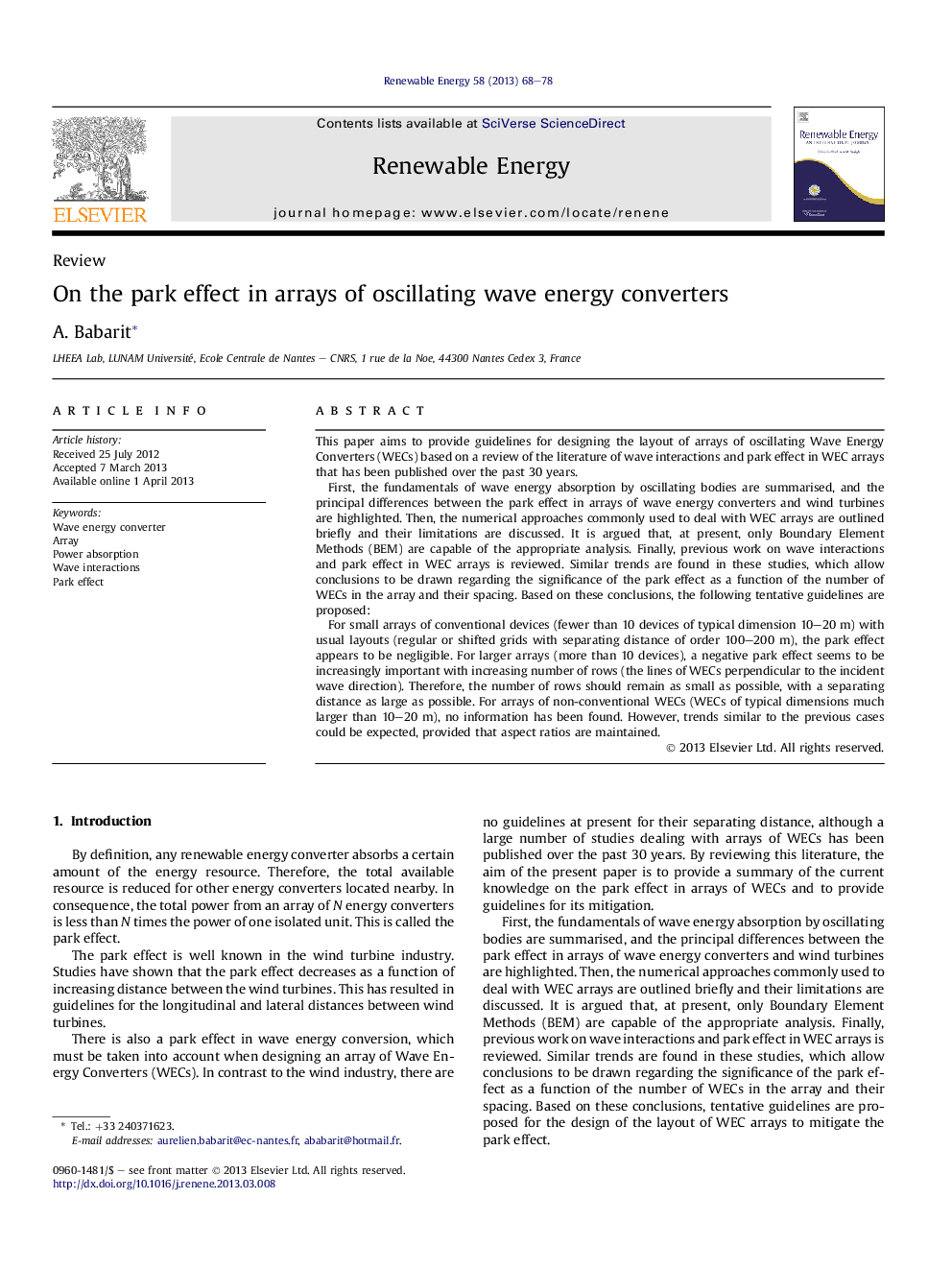| کد مقاله | کد نشریه | سال انتشار | مقاله انگلیسی | نسخه تمام متن |
|---|---|---|---|---|
| 300470 | 512483 | 2013 | 11 صفحه PDF | دانلود رایگان |

• The fundamentals of wave energy absorption by oscillating bodies are recalled.
• A review on the park effect in arrays of oscillating Wave Energy Converters is presented.
• Similar trends are observed in that review, thus tentative conclusions and guidelines are drawn.
This paper aims to provide guidelines for designing the layout of arrays of oscillating Wave Energy Converters (WECs) based on a review of the literature of wave interactions and park effect in WEC arrays that has been published over the past 30 years.First, the fundamentals of wave energy absorption by oscillating bodies are summarised, and the principal differences between the park effect in arrays of wave energy converters and wind turbines are highlighted. Then, the numerical approaches commonly used to deal with WEC arrays are outlined briefly and their limitations are discussed. It is argued that, at present, only Boundary Element Methods (BEM) are capable of the appropriate analysis. Finally, previous work on wave interactions and park effect in WEC arrays is reviewed. Similar trends are found in these studies, which allow conclusions to be drawn regarding the significance of the park effect as a function of the number of WECs in the array and their spacing. Based on these conclusions, the following tentative guidelines are proposed:For small arrays of conventional devices (fewer than 10 devices of typical dimension 10–20 m) with usual layouts (regular or shifted grids with separating distance of order 100–200 m), the park effect appears to be negligible. For larger arrays (more than 10 devices), a negative park effect seems to be increasingly important with increasing number of rows (the lines of WECs perpendicular to the incident wave direction). Therefore, the number of rows should remain as small as possible, with a separating distance as large as possible. For arrays of non-conventional WECs (WECs of typical dimensions much larger than 10–20 m), no information has been found. However, trends similar to the previous cases could be expected, provided that aspect ratios are maintained.
Journal: Renewable Energy - Volume 58, October 2013, Pages 68–78